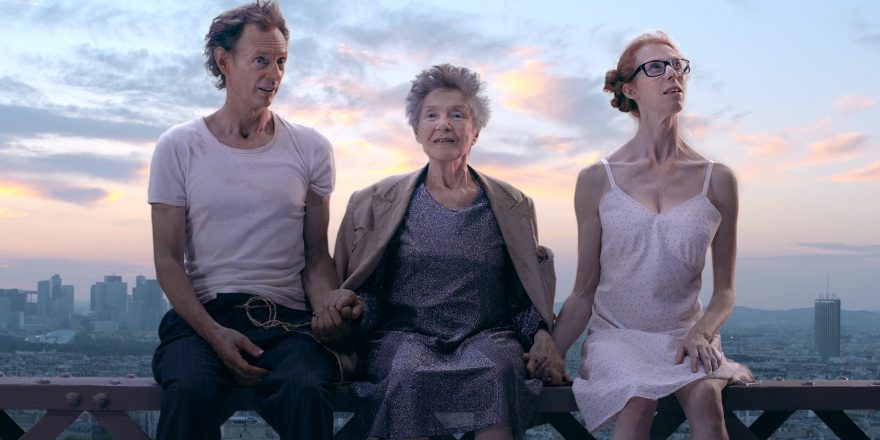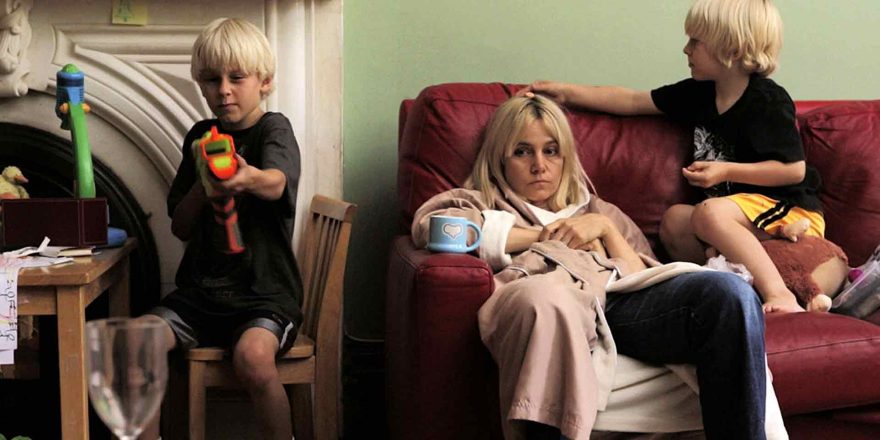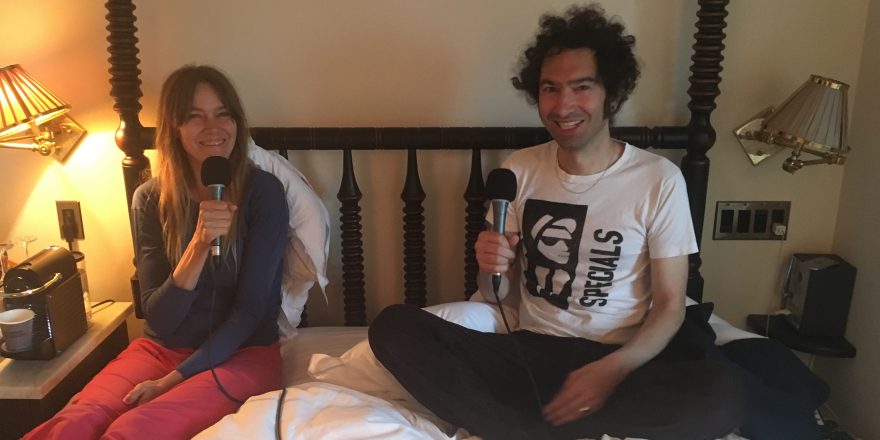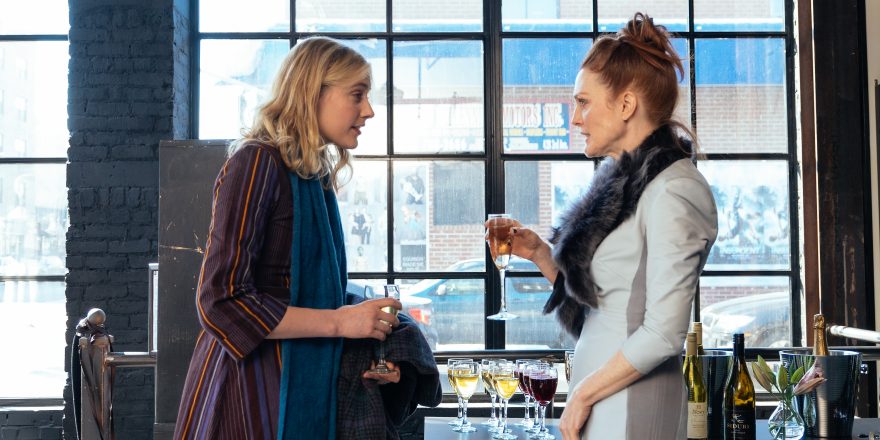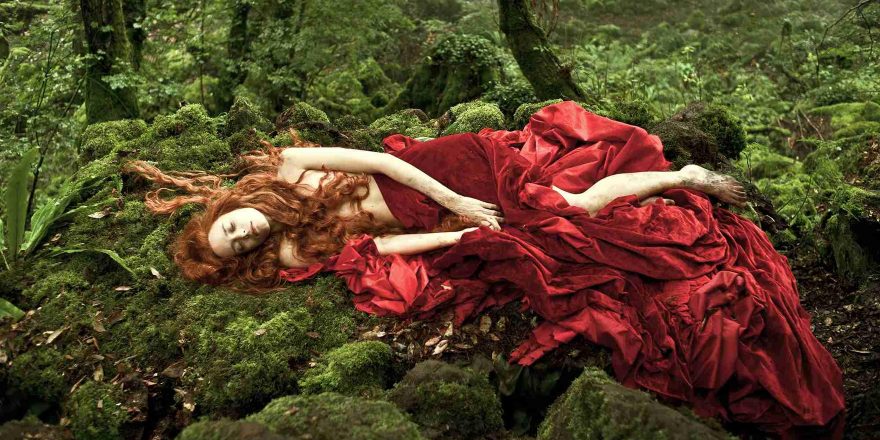I love seeing an actor walk into a tree. I love a character who walks into a wall. I love a new generation of the “banana peel.” I love when we laugh at ourselves; none of us are perfect. I love watching a succession of comedic events happen to a character; as the events build, so do our quiet smiles. Our face can’t take it anymore. The mouth explodes into loud and unique fits of laughter. I love not seeing a victim of violence. The only victim I want to see is the one being attacked by her ice cream cone, a skateboard and a metal pole.
I love so much about Lost in Paris. Thank you, Fiona Gordon and Dominique Abel, for writing, directing and starring in this film. Thank you for getting it across the ocean. Thank you for your comic timing, your cleverness, your silent scenes. Thank you for your physical comedy. Thank you for soaring above the violent storms on screen and showing us some sunny skies.
I loved watching Fiona and Dom dance across a restaurant floor. The rhythm of their bodies told a romantic tale as they tangled and tangoed and twisted like a pretzel. I’ve seen too many close-ups on TV and in movies lately. The human body has been wiped out. It’s the invasion of the talking heads. One says,“Wassup?” The other head responds, “Wassup?” “What you doing?” “Not much, you?” “Same,” answers the first head. Everyone is a speaking text message these days. Where did our bodies go?! Thank you, Fiona, for your movements through Paris in a green sweater and skirt while balancing a giant red backpack behind you. Thank you for keeping your head attached to your beautiful body.
I love seeing wide shots and a woman who can fill the space frame to frame, head to toe, body and soul. Fiona Gordon fills the frame better than Brigitte Bardot and her pillowy buttocks in Contempt. Fiona is not just sexy, she’s human. She’s gracefully awkward. She embraces and celebrates the challenges of walking on two legs. Here comes Fiona Gordon, a female comedian, dancing with Dom. Her body talks funny talk. Her ankle hangs from her leg like a loose tooth from its gums. She is all, and more, than many women have been able to be on screen. I am cheering on the funny lady!
Physical comedy in the movies got squashed by the invention of sound. The most physical of actors were just getting started. They found comedy in life’s silent moments. But no one is interested in silent moments anymore.Viewers of film often argue against coincidence in a story. I love all the coincidences in Lost in Paris. Why do we need an equation to get from A to B in a comedy? Just let there be a ladder to climb the wall, let there be a bus to get to Grandma’s house, or let Dom find Fiona’s yellow sweater and the two shall meet. Sometimes it’s not about seeing how she got the ladder, it’s about seeing how she climbs the ladder. We are breaking the rules of reality anyway. It’s a movie! Pull the rabbit out of your hat, or out of somewhere else, as long as he gets to make a funny face when you’ve got him by the ears!
Physical comedy in a script is both difficult to read, and to write. A reader wants to cruise through scripts, but the lines of a funny skit lay on the page like a pile-up in a football game. Readers can’t see the ball anymore. The game is stalled. It takes a lot of describing to write skits, a lot of words to build them. But skits are little stories within a story. They display the struggles of life – of having five toes instead of six; of not having enough hands to wipe your nose and brush your teeth while holding the hand of the boy who is stumbling down the stairs. Skits exhibit the consequences of a busy brain, the essence of life beating you with Tyson fists.
There are skits that involve struggles between two people, between a person and an elephant, or a person and a blow dryer. Inanimate objects can’t talk for themselves. There is no dialogue. It’s challenging to make an electrical chord, a toaster, and a jar of jelly speak for themselves. It’s what the physical comedian does with them that’s funny. What the jar of jelly comes up with on its own can be hysterical. When you’re trying to get money for your movie, and readers can’t imagine the skits, then you wish your jar of jelly could have had a set of lips and some lines in the script. In his skit with a cord and a speaker, Dom gave the inanimate objects all the lips necessary to speak for themselves. And did they have something to say!
Creating skits is a hard, hard thing. I’ve always had to play them out, not write them out. I’d have an idea in mind like Airplane. I’d grab some props – a tire chain and some balloons. I’d sit for long amounts of time with the props. We stare at each other wondering how we’re going to find something funny to happen. We face the silence together. Then magic happens. The chain becomes a seatbelt, the balloons become a float, I become a stewardess. We are flying for three minutes in a make-believe sky. The film is shot. Then, sadly, we part ways, ’cause I have no use for a tire chain, and the balloons have lost all their air.
I also explore physical comedy in my films. When I saw that Lost in Paris would be opening in New York, it felt like family was coming to town. I wanted to put the coffee on. When I watched the film, I felt reunited with old friends. When I heard Fiona speak bad French, I got so excited. When I saw her really fall into the water, I found a hero. I knew there were more of us out there; more of us who want to walk into walls, to fall into rivers, to spill our milk with all the glory, wonder and humor we can find. I knew there were more of us wanting to tell the stories of limbs and torsos working together on crowded trains, with a birthday cake in one hand, a Chihuahua in the other. I knew there were more of us without words. I knew there were more of us using our bodies to speak.
Physical comedy in the movies got squashed by the invention of sound. The most physical of actors were just getting started. They found comedy in life’s silent moments. But no one is interested in silent moments anymore. Silent moments are taken up by text messages and Instagram. Every bit of silence is filled. When I found you, Fiona and Dom, I thought, “Yes! There are more of us out there!” Whether we are like unicorns hobbling out of hiding, or like a nervous niece lost in Paris, at least now I know our kind is still alive and we are returning to where we were meant to be: in front of audiences and on screens of every type, breaking the silence in our quiet, unpredictable way. Listen to the sound of the people laughing. We love to make them laugh.


